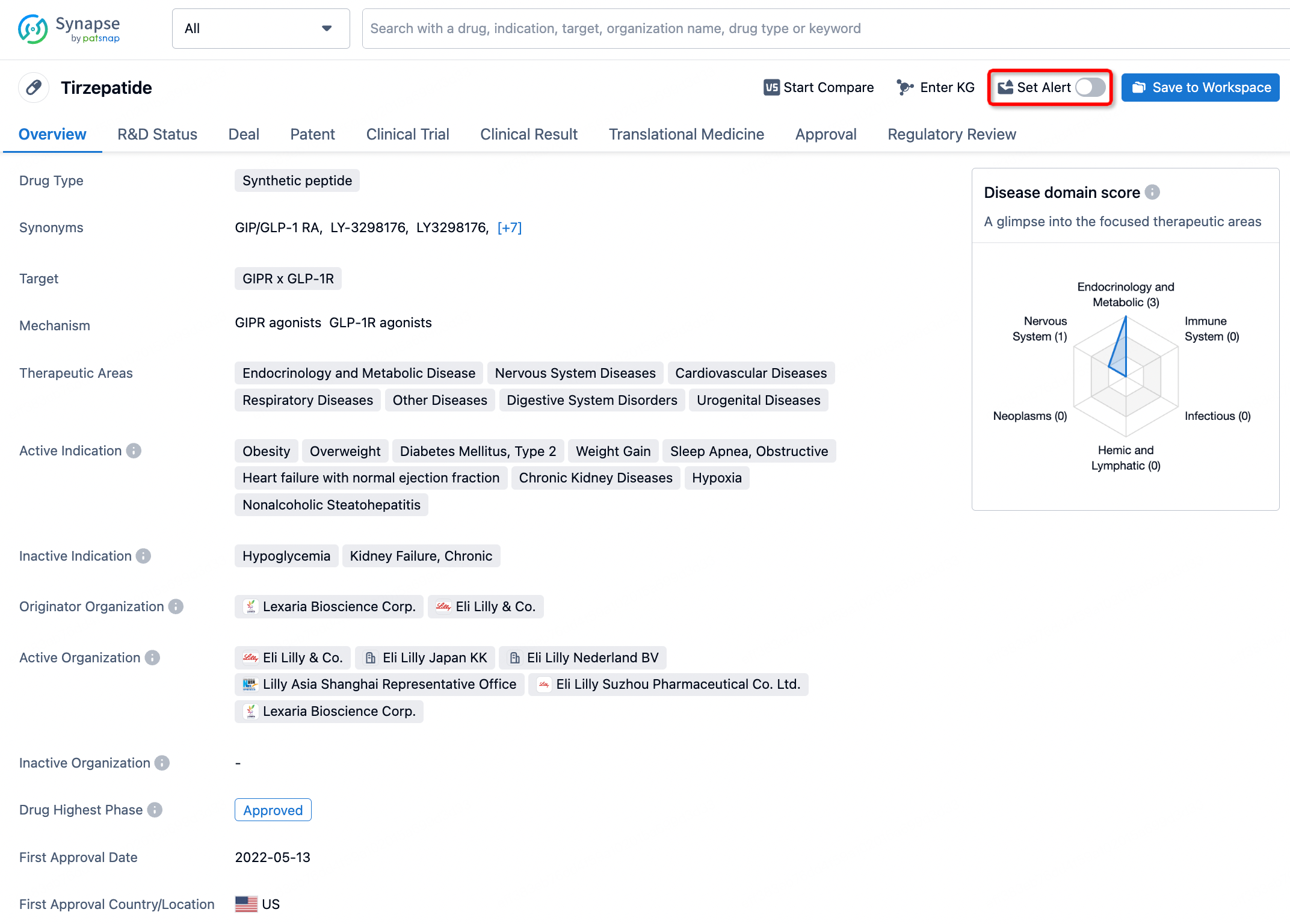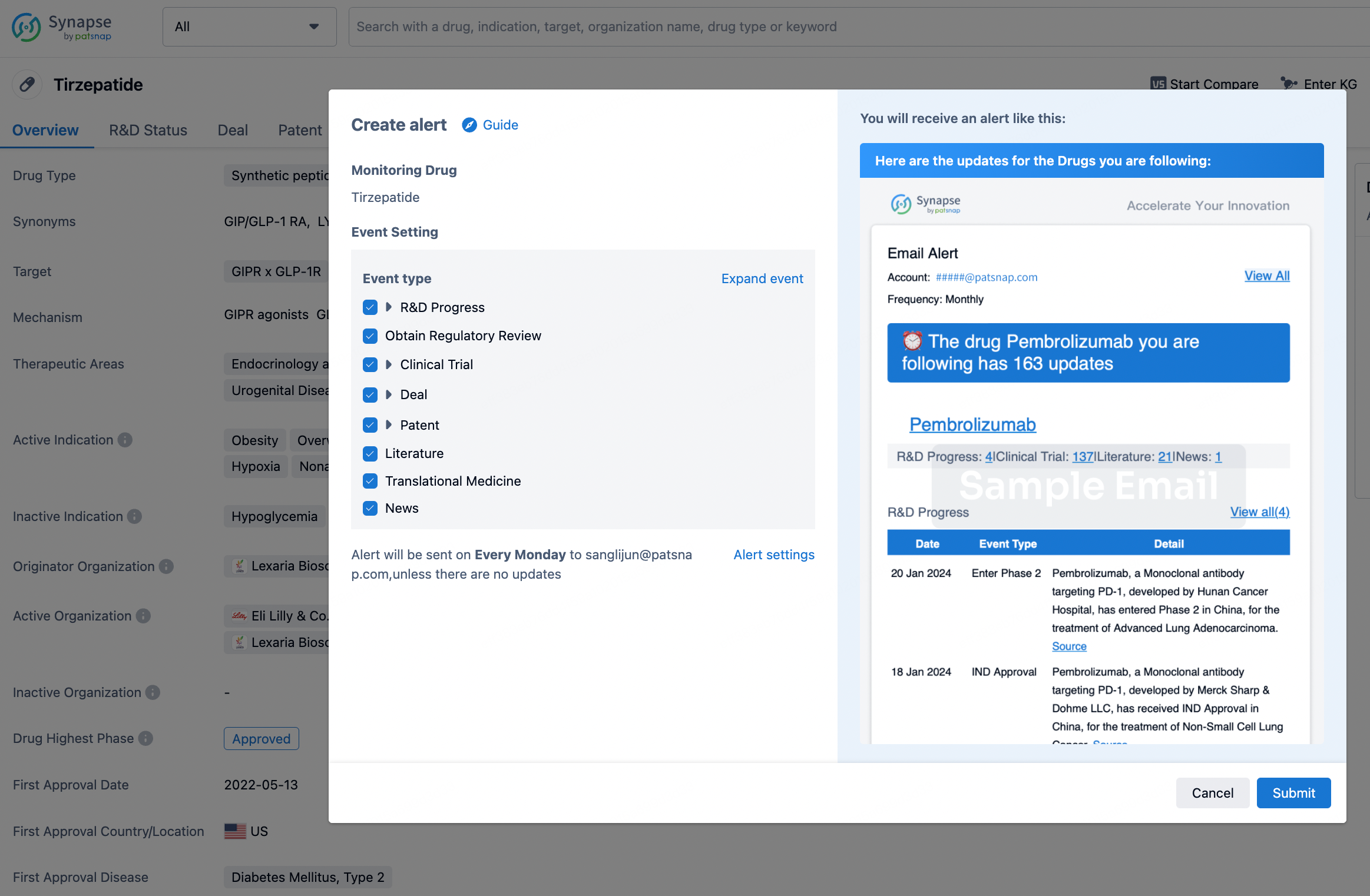Request Demo
What is Bulaquine used for?
14 June 2024
Bulaquine, also known by its chemical name Elubaquine, is an antimalarial drug that has garnered attention for its potential in the fight against malaria. This drug has been developed and researched primarily by the Indian pharmaceutical industry, notably by the Central Drug Research Institute (CDRI) in India. Bulaquine is structured as an 8-aminoquinoline, a class of drugs known for their efficacy against malaria, particularly the liver stages of Plasmodium vivax and Plasmodium ovale. The primary indication for Bulaquine is the treatment and prevention of malaria relapses, targeting the hypnozoite stage of the parasite which resides in the liver, thus preventing the recurrence of the disease.
Malaria remains a significant public health challenge, particularly in tropical and subtropical regions. Traditional treatments often face the challenge of drug resistance, prompting the need for new and effective alternatives. Bulaquine has been part of this ongoing research effort, with promising results in preclinical and clinical trials. Recent studies have indicated its potential as a partner drug in combination therapies, enhancing its efficacy and reducing the likelihood of resistance development.
Bulaquine operates through a mechanism that is somewhat analogous to other drugs in the 8-aminoquinoline class but with unique characteristics that distinguish it. The drug is known to target the dormant liver stages (hypnozoites) of the malaria parasite, Plasmodium vivax, and Plasmodium ovale. These hypnozoites can remain dormant in the liver and cause relapses by reactivating weeks or months after the initial infection. Bulaquine works by generating reactive oxygen species that damage the cellular structures of these dormant parasites, thus eradicating them and preventing subsequent relapses.
Once administered, Bulaquine undergoes metabolic conversion in the liver to its active form. This process releases metabolites that exert a toxic effect on the parasite. The precise molecular pathways involved are still under investigation, but it is understood that the drug's efficacy is tied to its ability to disrupt mitochondrial function within the hypnozoites, leading to their death.
Bulaquine is typically administered orally in combination with another antimalarial drug, such as chloroquine, to enhance its effectiveness. The standard regimen usually involves taking Bulaquine once daily for a period determined by the treating physician, often around seven days, depending on the specifics of the case and patient response. The onset of action for Bulaquine can vary, but it typically starts to work within a few days of commencement of therapy. It is crucial to follow the prescribed dosage regimen strictly to ensure optimal efficacy and minimize the risk of resistance development.
It is recommended that Bulaquine be taken with food to improve absorption and reduce gastrointestinal side effects. Patients are advised to complete the full course of the medication even if they start feeling better before the end of the treatment period. This ensures that all dormant parasites are eradicated and helps in preventing a relapse.
Like any medication, Bulaquine is associated with a range of potential side effects, which can vary in severity. Common side effects include gastrointestinal disturbances such as nausea, vomiting, and abdominal pain. Some patients may experience headaches, dizziness, and fatigue. These side effects are generally mild and tend to resolve once the body adjusts to the medication.
However, there are more serious side effects to be aware of. Hemolytic anemia can occur in individuals with glucose-6-phosphate dehydrogenase (G6PD) deficiency. Therefore, it is contraindicated in patients known to have G6PD deficiency, and screening for this condition is recommended before starting Bulaquine therapy. Additionally, methemoglobinemia is a rare but serious condition that can result from Bulaquine use, necessitating immediate medical attention.
Other contraindications include severe liver or renal impairment, as these conditions can affect the metabolism and excretion of the drug, potentially leading to toxicity. Pregnant women and breastfeeding mothers are also advised to avoid Bulaquine due to the potential risks to the fetus or infant.
Drug interactions can influence the effectiveness and safety of Bulaquine. Notably, its combination with other antimalarial drugs is common practice, but this must be done under medical supervision to avoid adverse interactions. Drugs that induce or inhibit liver enzymes, particularly cytochrome P450, can alter Bulaquine metabolism, potentially leading to reduced efficacy or increased toxicity.
It is also important to avoid concurrent use of other medications that have a high risk of hemolytic anemia or methemoglobinemia. Patients should inform their healthcare provider of all the medications they are currently taking, including over-the-counter drugs and herbal supplements, to ensure that no harmful interactions occur.
In conclusion, Bulaquine represents a valuable tool in the ongoing fight against malaria, offering hope for more effective management of this persistent and widespread disease. Continued research and careful clinical application are essential to fully realize its potential and ensure its safe use in diverse patient populations.
Malaria remains a significant public health challenge, particularly in tropical and subtropical regions. Traditional treatments often face the challenge of drug resistance, prompting the need for new and effective alternatives. Bulaquine has been part of this ongoing research effort, with promising results in preclinical and clinical trials. Recent studies have indicated its potential as a partner drug in combination therapies, enhancing its efficacy and reducing the likelihood of resistance development.
Bulaquine operates through a mechanism that is somewhat analogous to other drugs in the 8-aminoquinoline class but with unique characteristics that distinguish it. The drug is known to target the dormant liver stages (hypnozoites) of the malaria parasite, Plasmodium vivax, and Plasmodium ovale. These hypnozoites can remain dormant in the liver and cause relapses by reactivating weeks or months after the initial infection. Bulaquine works by generating reactive oxygen species that damage the cellular structures of these dormant parasites, thus eradicating them and preventing subsequent relapses.
Once administered, Bulaquine undergoes metabolic conversion in the liver to its active form. This process releases metabolites that exert a toxic effect on the parasite. The precise molecular pathways involved are still under investigation, but it is understood that the drug's efficacy is tied to its ability to disrupt mitochondrial function within the hypnozoites, leading to their death.
Bulaquine is typically administered orally in combination with another antimalarial drug, such as chloroquine, to enhance its effectiveness. The standard regimen usually involves taking Bulaquine once daily for a period determined by the treating physician, often around seven days, depending on the specifics of the case and patient response. The onset of action for Bulaquine can vary, but it typically starts to work within a few days of commencement of therapy. It is crucial to follow the prescribed dosage regimen strictly to ensure optimal efficacy and minimize the risk of resistance development.
It is recommended that Bulaquine be taken with food to improve absorption and reduce gastrointestinal side effects. Patients are advised to complete the full course of the medication even if they start feeling better before the end of the treatment period. This ensures that all dormant parasites are eradicated and helps in preventing a relapse.
Like any medication, Bulaquine is associated with a range of potential side effects, which can vary in severity. Common side effects include gastrointestinal disturbances such as nausea, vomiting, and abdominal pain. Some patients may experience headaches, dizziness, and fatigue. These side effects are generally mild and tend to resolve once the body adjusts to the medication.
However, there are more serious side effects to be aware of. Hemolytic anemia can occur in individuals with glucose-6-phosphate dehydrogenase (G6PD) deficiency. Therefore, it is contraindicated in patients known to have G6PD deficiency, and screening for this condition is recommended before starting Bulaquine therapy. Additionally, methemoglobinemia is a rare but serious condition that can result from Bulaquine use, necessitating immediate medical attention.
Other contraindications include severe liver or renal impairment, as these conditions can affect the metabolism and excretion of the drug, potentially leading to toxicity. Pregnant women and breastfeeding mothers are also advised to avoid Bulaquine due to the potential risks to the fetus or infant.
Drug interactions can influence the effectiveness and safety of Bulaquine. Notably, its combination with other antimalarial drugs is common practice, but this must be done under medical supervision to avoid adverse interactions. Drugs that induce or inhibit liver enzymes, particularly cytochrome P450, can alter Bulaquine metabolism, potentially leading to reduced efficacy or increased toxicity.
It is also important to avoid concurrent use of other medications that have a high risk of hemolytic anemia or methemoglobinemia. Patients should inform their healthcare provider of all the medications they are currently taking, including over-the-counter drugs and herbal supplements, to ensure that no harmful interactions occur.
In conclusion, Bulaquine represents a valuable tool in the ongoing fight against malaria, offering hope for more effective management of this persistent and widespread disease. Continued research and careful clinical application are essential to fully realize its potential and ensure its safe use in diverse patient populations.
How to obtain the latest development progress of all drugs?
In the Synapse database, you can stay updated on the latest research and development advances of all drugs. This service is accessible anytime and anywhere, with updates available daily or weekly. Use the "Set Alert" function to stay informed. Click on the image below to embark on a brand new journey of drug discovery!
AI Agents Built for Biopharma Breakthroughs
Accelerate discovery. Empower decisions. Transform outcomes.
Get started for free today!
Accelerate Strategic R&D decision making with Synapse, PatSnap’s AI-powered Connected Innovation Intelligence Platform Built for Life Sciences Professionals.
Start your data trial now!
Synapse data is also accessible to external entities via APIs or data packages. Empower better decisions with the latest in pharmaceutical intelligence.


